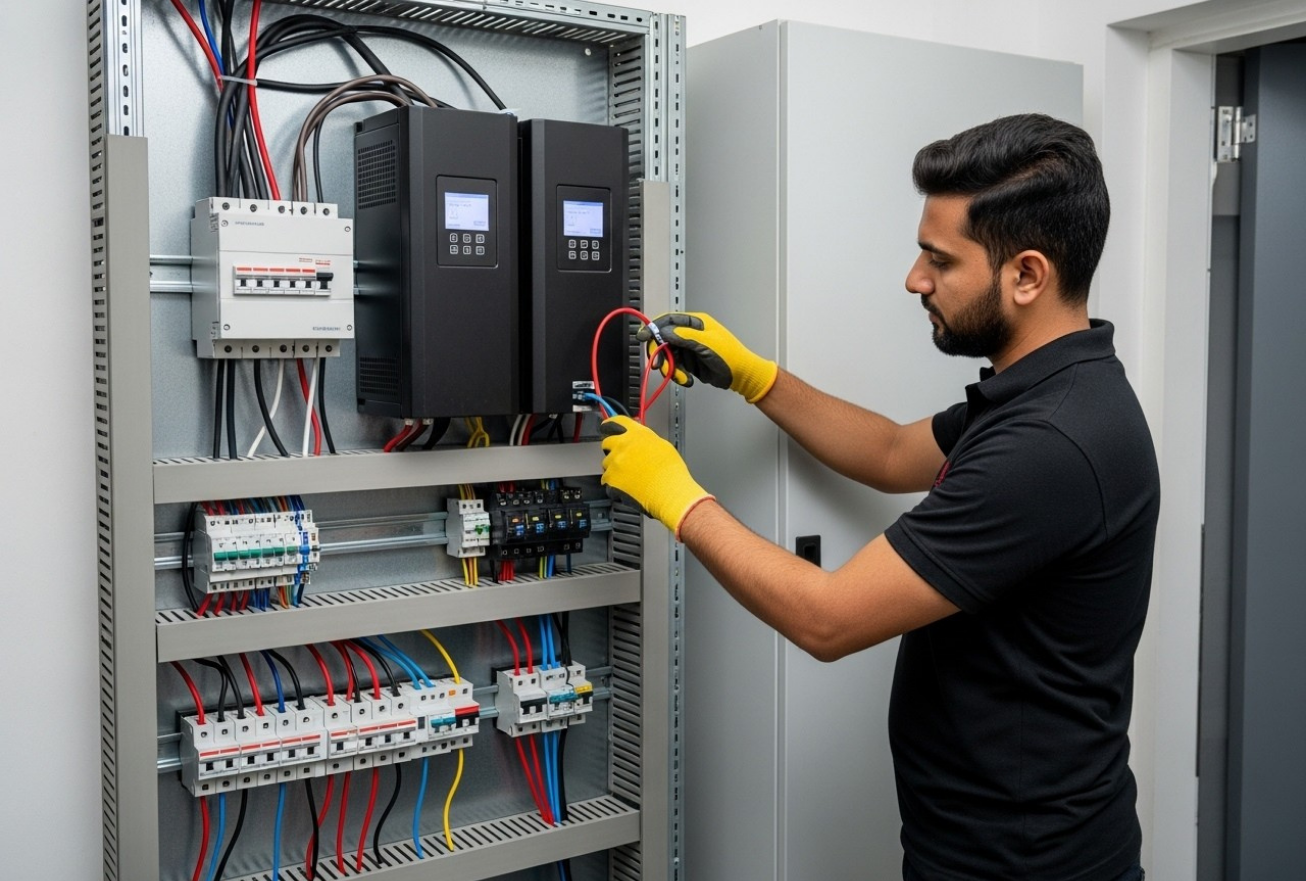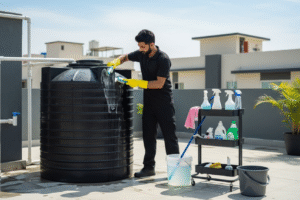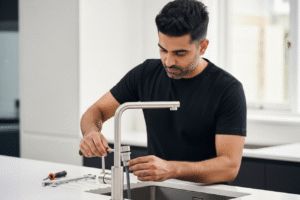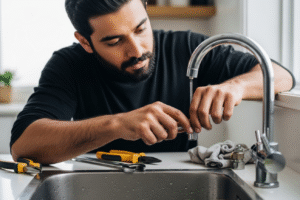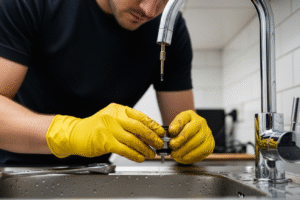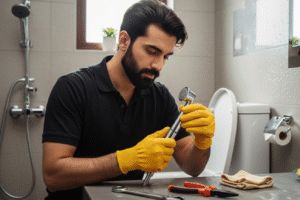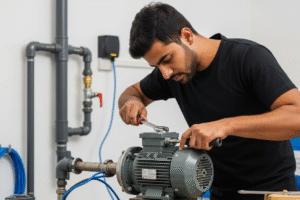UPS Wiring
0+ BookingsLahore
4.6 (5 reviews)
UPS Wiring
A Complete Guide for Your Home and Industrial Needs
Imagine a power outage that strikes your office or home. Your computer, security system, or other essential appliances suddenly stop functioning, leading to interruption, data loss, or even more. This is when a UPS (Uninterruptible Power Supply) system can help—supplying backup power and safeguarding your devices. However, to fully harness its potential, proper wiring for your UPS is vital.
In this thorough guide, we’ll take you through all you must be aware of UPS wiring—from the simplest notions to more practical wiring diagrams and even advice on related wiring issues like how to wire a dry-contact relay. No matter if you’re a homeowner or a professional user, this guide will help you comprehend UPS wiring with confidence and clarity.
At Sariea, we specialize in providing high-quality UPS wiring solutions tailored to both residential and industrial needs. With our expert knowledge, premium-grade materials, and commitment to safety and reliability, Sariea is your trusted partner in keeping your power flowing without interruption. Whether you’re wiring a small home UPS or a large-scale system for a data center, we ensure every connection is secure, compliant, and built to last.
What is UPS Wiring?
UPS wiring is those electrical cables and set-up necessary to connect an uninterruptible Power Supply system into your electrical network. It makes sure that if the main power source fails it will immediately supply power from its batteries. UPS immediately draws the power it needs via its batteries to keep your devices functioning efficiently.
UPS systems are essential to protect servers, IT equipment and medical devices from sudden power outages. They also assist in the automation of industrial processes, and help ensure that small and home office enterprises operate without issue. In emergency communication centers, UPS units ensure continuous operation during critical situations.
Why is UPS Wiring Important?
The wiring of an UPS system is not only connecting cables, it’s about ensuring that power is switched on smoothly as well as safeguarding sensitive equipment and ensuring security standards. Incorrect UPS wiring could cause power outages and leave critical devices exposed. Additionally, it could cause damage to the equipment and create serious electrical dangers or fire hazards. In time, these issues can drastically reduce the life and performance of the UPS system.
About Sariea: Powering Progress, Wire by Wire
Sariea is a company that believes in the power of Sariea. We believe that the power of electricity should never be in doubt. As a reputable name for electrical products, we are specialized in offering professional UPS wiring services as well as premium wiring products, such as high-performance Teflon hook-up wires as well as kit for dry-contact relays as well as complete industrial and home UPS wire solutions.
From homeowners with individual homes to huge industrial facilities, Sariea has helped thousands of clients maintain uninterrupted power by implementing expertly-designed systems. Our certified team of experts makes sure that every installation is compliant with the safety standards as well as performance standards and has long-term reliability.
Components of a UPS Wiring System
UPS Unit
Your UPS system converts DC generated by the batteries to AC to power your devices in the event of an interruption. It’s at the center of your system.
Batteries
The batteries store energy, typically sealed lead-acid batteries of 12V or 24V or lithium-ion. Their capacity determines the length of time your devices can run.
Inverter
Certain UPS systems come with an inverter, while others require external inverters. Inverters are the ones that keep your 110V or 220V devices running.
Distribution Panel
This panel distributes power to a few circuits (e.g. fans, lights and modems) and keeps essential systems running even as larger appliances like ACs remain off grid.
Connectors and Wiring
Connectors and wires that are reliable are essential. Connectors that are of good quality or Teflon hook up wire will ensure durable and long-lasting performance.
How to Wire Up a UPS System at Home
Step 1 – Choose the Right UPS and Wiring Materials
Choose a UPS with capacities that match the power requirements of your particular needs to ensure reliability in the event of downtimes. Choose a quality hook-up wire or Teflon hook up wire to ensure high insulation and durability for a long time. Also, ensure that every wiring conforms to local electrical codes to ensure the safety of your home and ensure compliance.
Step 2 – Connect the UPS to the Main
Before you begin the installation, shut off your main electricity source to ensure security. Then connect the UPS interface to your main panel’s output by using the appropriate wires, which are insulated and are compatible with the specifications of the system. Always consult a trusted UPS wiring diagram to guide home configurations to ensure precise and safe connections.
Step 3 – Connect Devices to UPS Output
Connect critical devices directly to outlets for UPS so that they are powered continuously in the event of an outage. If you have devices that are hardwired, make sure to use the correct connectors – like IEC C13 plugs or terminal blocks, based on the specifications for power and the type of equipment that is being connected.
Step 4 – Test the System
After connecting all devices after completing all connections, restart the main power supply. Then, verify that the UPS is charging its batteries in a timely manner. To ensure that everything works according to plan, test a power outage and ensure that the UPS effortlessly offers backup power to connected devices, without interruption.
Why Teflon Hook Up Wire Is a Smart Choice
It’s also about safety, performance and durability.
- Wire for hook up ideal for indoor setups as well as lighter loads. Flexible and easy to handle.
- Teflon hook-up wire offers high resistance to heat, high friction, low friction, with non-stick insulation. It is ideal for tight cabinet installations and high-performance UPS configurations.
Here at Sariea We recommend Teflon-coated wire for all critical components because of its fire-resistant properties, durability in addition to the industrial quality of its performance.
Understanding UPS Wiring Diagrams
A diagram of the UPS wiring shows the electrical connections that connect the batteries, UPS as well as load device. It’s an invaluable instrument for troubleshooting and installing.
Common UPS Wiring Diagram Elements
- Lines for power sources (live neutral earth) constitute the core for UPS in-line wiring. A secure and accurate identification are vital to ensure security and an appropriate grounding.
- Inverter and rectifier connections should be in line with the specifications of the system to avoid faults and guarantee the flow of energy.
- Terminals for batteries should be tidy and secure for the best energy storage as well as backup ready.
- Connections to load output should be appropriately designed and sealed to avoid oversaturation and to ensure continuous device performance.
- Switches for bypass and transfer enable the maintenance of or switch to source, without disrupting the power supply to vital equipment.
A clear wiring diagram can prevent mistakes and helps ensure the safety standards are met.
Related Wiring Topics to Boost Your Knowledge
How to Wire Up a Dry Contact Relay
Dry contact relays can be typically employed in UPS systems to signal alarms or for controlling devices external to the UPS system. The wiring involves connecting the coil with the UPS control circuit and then connecting the contact points to monitor systems. They offer an isolated, voltage-free connection which makes them suitable to be used in a secure way with different control systems.
Tips for Wiring Dry Contact Relays
- Use an insulated hook-up wire to ensure safety, since it protects you from short circuits and shocks.
- Follow the wiring diagram of the relay carefully to ensure its proper operation and to avoid any damage.
- Check the operation of relays before completing connections to verify that it is reliable under loads.
Conclusion: Protect Your Power with a Correct UPS Wiring
A properly designed UPS wiring system is the basis of a reliable, uninterruptible power supply. It doesn’t matter if it’s for your industrial or home setup knowing the basics of wiring making use of the appropriate materials such as hook up wire or Teflon hook up wire and following wiring diagrams will ensure your devices remain powered even in the event of power interruptions.
Sariea, we blend expert knowledge with high-quality materials to assist you in installing UPS solutions that are secure, efficient and constructed to last. With diagrams and dry contacts we’ve got everything wired for you.
Call to Action
Contact Sariea now for professional guidance with high-end materials and a hands-on service. No matter if you’re a homeowner, an owner of a business, or an industrial operator We’re here to make sure that your power supply never misses one beat. Don’t just wait until the next outage occurs. Get set up and connected to Sariea now!
FAQs
What kind of wire is suitable in UPS cables?
Teflon hook up wire is recommended due to its heat resistance and insulation particularly in industrial environments. It is able to withstand extreme temperatures and provides outstanding chemical resistance.
Do I have to wire an UPS system by myself?
Basic wiring for a home UPS is possible by a competent DIYer but for larger or more complicated systems it is recommended to hire a professional for installation. Be sure to follow the safety guidelines.
How can I read a diagram of UPS wiring?
Look for symbols that indicate the source of power, battery and other connected devices. Follow the flow from input to output to get a complete view of the wiring.
What happens when UPS wiring isn’t correct?
Improper wiring could cause disruptions, cause damage to equipment, or cause serious dangers. Use only the best products and follow the manufacturer’s instructions.
How often should UPS wiring be inspected?
UPS wiring should be examined at least every six to twelve months for the highest performance and security. Regular inspections help identify weak connections, worn-out batteries, or damage to the insulation before they can cause problems.
Reviews (5)
Write a ReviewTurki Al-Anaz
2 months ago
Great experience with Sariea. The UPS wiring was done quickly, safely, and professionally. Now I have uninterrupted power with complete peace of mind!
Adeel Khan
2 months ago
I booked the UPS Wiring service from sariea.com for my home. The electrician completed the wiring properly and made sure the system was working. It took a little longer than expected, but the work was neat. Overall, a decent experience
Imran Shah
2 months ago
"I’m very happy with the UPS wiring work. The team was skilled, polite, and made sure all connections were secure.
Abdulrahman Al-Faraj
2 months ago
I’m very happy with the UPS wiring service provided by Sariea. They completed the job neatly and safely, giving me peace of mind. Will definitely use their services again.
Abdullah Malik
2 months ago
Sariea did an excellent job with my UPS wiring. Everything is neat, safe, and works perfectly.


